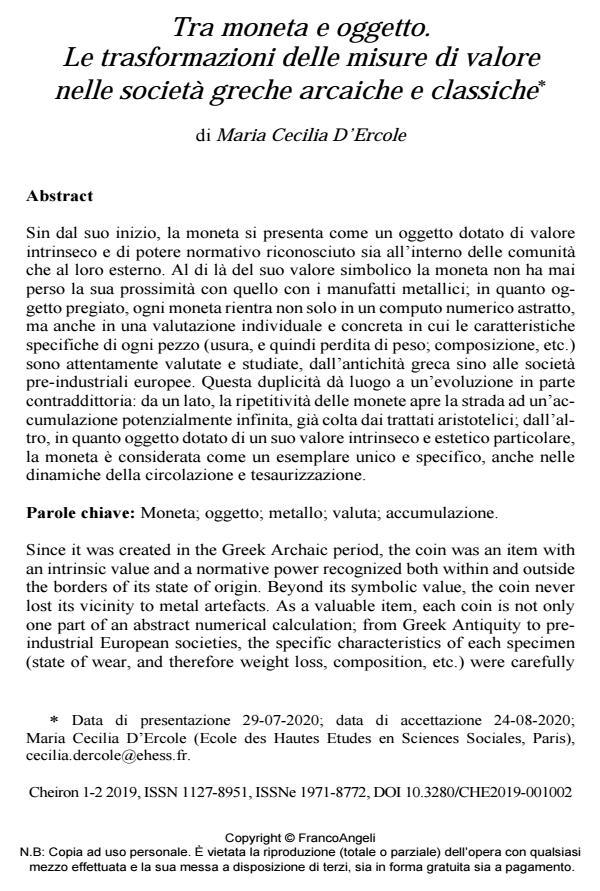Tra moneta e oggetto. Le trasformazioni delle misure di valore nelle società greche arcaiche e classiche
Journal title CHEIRON
Author/s Maria Cecilia D’Ercole
Publishing Year 2021 Issue 2019/1-2
Language Italian Pages 27 P. 19-45 File size 292 KB
DOI 10.3280/CHE2019-001002
DOI is like a bar code for intellectual property: to have more infomation
click here
Below, you can see the article first page
If you want to buy this article in PDF format, you can do it, following the instructions to buy download credits

FrancoAngeli is member of Publishers International Linking Association, Inc (PILA), a not-for-profit association which run the CrossRef service enabling links to and from online scholarly content.
Since it was created in the Greek Archaic period, the coin was an item with an intrinsic value and a normative power recognized both within and outside the borders of its state of origin. Beyond its symbolic value, the coin never lost its vicinity to metal artefacts. As a valuable item, each coin is not only one part of an abstract numerical calculation; from Greek Antiquity to pre-industrial European societies, the specific characteristics of each specimen (state of wear, and therefore weight loss, composition, etc.) were carefully assessed. This ambivalence gives rise to a partly contradictory evolution: on the one hand, the standardization of coins opens up the way to a potentially infinite accumulation, which Aristotle was probably the first to comprehend; on the other, as an object endowed with a particular intrinsic and aesthetic value, each coin is considered as a unique and specific specimen, even in the dynamics of circulation and accumulation.
Keywords: Coin; Object; Metal; Evaluation; Accumulation.
Maria Cecilia D’Ercole, Tra moneta e oggetto. Le trasformazioni delle misure di valore nelle società greche arcaiche e classiche in "CHEIRON" 1-2/2019, pp 19-45, DOI: 10.3280/CHE2019-001002